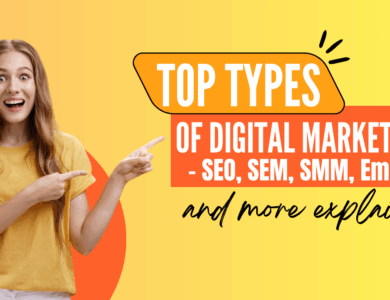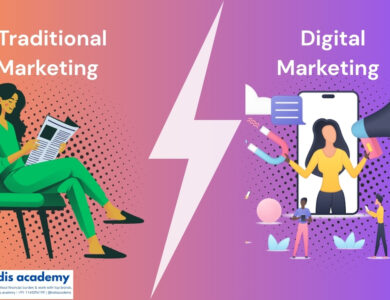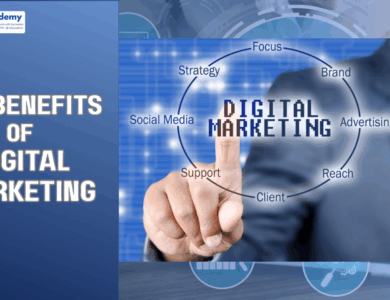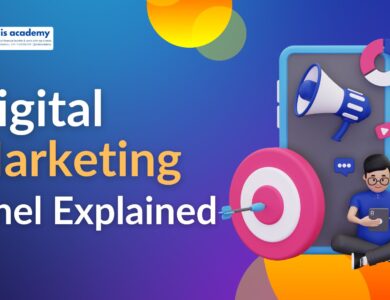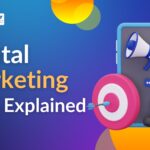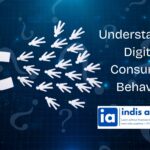History of Digital Marketing – How It All Began and Where It’s Headed
Explore the fascinating journey of digital marketing — from its early beginnings to future trends shaping the way brands connect with audiences online
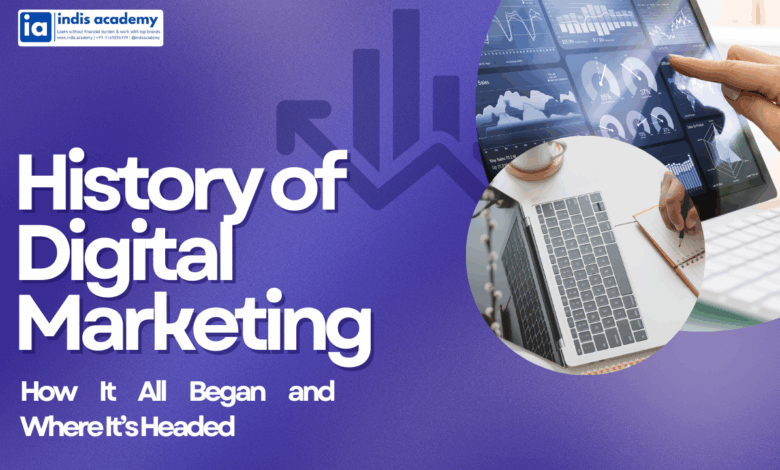
History of Digital Marketing – How It All Began and Where It’s Headed
Long before Instagram ads and Google search results became part of our everyday lives, digital marketing was quietly taking its first steps in a world still adjusting to dial-up connections and clunky desktop computers.
Let’s rewind the clock and walk through the fascinating story of digital marketing — how it was born, how it evolved with each technological wave, and where it’s headed in the age of AI and automation.
This journey isn’t just a history lesson; it’s a window into how the online world shaped consumer behavior, revolutionized business models, and continues to disrupt entire industries.
Also read: Want a Career in Digital Marketing? Here’s Everything You Need to Know
Chapter 1: The Email That Started It All (1971 – 1990s)
Our story begins in 1971, when Ray Tomlinson sent the first-ever email. At the time, it was just a technical achievement. But what followed in the next two decades laid the digital foundation marketers would soon capitalize on.
By the late 1980s, computers had entered the corporate world, and by the early 1990s, companies began to use them to reach customers in new ways. The true shift came with the public adoption of the internet in the early ’90s.
Key milestones:
- 1990: The first search engine, Archie, was created.
- 1993: The first clickable banner ad appeared on HotWired (now Wired.com).
- 1994: Yahoo! launched, soon attracting over a million hits in its first year.
- 1996: Hotmail was launched, offering free email access to anyone with internet.
Email marketing became one of the earliest tools in the digital marketer’s toolbox. Brands started collecting email addresses and sending promotional offers to users directly.
Back then, it was simple — no automation, no segmentation. But it worked. Response rates were high because the internet was still new and exciting.
Chapter 2: Search Engines and the Rise of SEO (Late 1990s – Early 2000s)
As websites multiplied, people needed a better way to navigate the web. Enter search engines.
- Google launched in 1998, bringing with it a game-changing algorithm based on backlinks and relevancy.
- Other search engines like AltaVista, Lycos, and Ask Jeeves also played a role, but none could match Google’s speed and accuracy.
Businesses quickly learned that ranking on search engines could bring in targeted traffic. Thus began the age of Search Engine Optimization (SEO).
SEO in the early 2000s was rudimentary:
- Keyword stuffing
- Hidden text
- Directory submissions
- Reciprocal link exchanges
Still, the potential was clear. If you could get on the first page of Google, you could generate leads, sales, and serious profits.
Google changed the game again with the introduction of Google AdWords in 2000. Now businesses could pay to appear at the top of search results. This marked the beginning of Pay-Per-Click (PPC) advertising.
It wasn’t just about being found organically — it was about buying visibility.
Also read: Want a Career in Digital Marketing? Here’s Everything You Need to Know
Chapter 3: Social Media Changes the Game (2004 – 2010)
In the early 2000s, the internet became more social. What started as basic forums and chat rooms evolved into social networking platforms.
- 2003: LinkedIn launched as a professional networking site.
- 2004: Facebook was born at Harvard and later opened to the public.
- 2005: YouTube launched, revolutionizing video sharing.
- 2006: Twitter introduced micro-blogging.
Social media allowed brands to engage directly with users — not just advertise to them. It brought two-way communication, building communities and brand loyalty.
Marketers began focusing on:
- Creating brand pages
- Growing follower bases
- Running social ad campaigns
- Leveraging user-generated content
It was the start of the influencer era, long before “influencer” was even a job title.
Content marketing also started to gain traction. Brands realized they could use blogs, videos, and how-to guides to educate rather than just sell. SEO and content marketing became deeply intertwined.
Chapter 4: The Rise of Mobile & Data-Driven Personalization (2010 – 2015)
With the introduction of the iPhone in 2007 and the boom of Android devices, the web became portable. By 2012, mobile internet usage was skyrocketing.
Marketers had to adapt fast:
- Websites needed to be mobile-friendly.
- Emails had to be responsive.
- Search strategies had to consider voice queries.
Google launched mobile-first indexing, signaling a major shift. The user experience on mobile was now a ranking factor.
At the same time, data analytics tools became more advanced. Platforms like Google Analytics, HubSpot, and Marketo allowed marketers to track every click, scroll, and bounce.
This gave birth to behavioral targeting, where users received:
- Dynamic product recommendations
- Personalized emails based on activity
- Retargeted ads after visiting a site
Marketing automation platforms emerged, making it easier to:
- Send drip email campaigns
- Score leads
- Build conversion funnels
The focus shifted to user-centric marketing, where every interaction was tailored to the individual.
Chapter 5: Automation, AI, and the Digital Renaissance (2016 – Present)
The last decade has brought us into the era of intelligent digital marketing.
Artificial intelligence and machine learning have redefined how campaigns are built, optimized, and scaled:
- AI-powered copywriting tools like ChatGPT and Jasper
- Predictive analytics for customer behavior
- Real-time bidding in ad auctions
- Smart segmentation and lookalike audiences
Voice search and visual search (via Google Lens, Alexa, Siri) are transforming SEO again.
Meanwhile, platforms like TikTok and Instagram Reels have shifted attention spans toward short-form, high-impact content.
Privacy has also taken center stage:
- GDPR (2018) in Europe
- iOS 14+ privacy restrictions (affecting ad tracking)
- Cookieless future as Chrome phases out third-party cookies
Marketers now need to balance personalization with privacy compliance.
The tools may have changed, but the fundamentals remain the same: deliver value to the right person at the right time.
So, Where Is Digital Marketing Heading?
The future of digital marketing will be:
- AI-driven: Smart systems that personalize content at scale, auto-optimize campaigns, and even predict outcomes.
- Conversational: Chatbots, voice assistants, and WhatsApp automation will replace forms and static FAQs.
- Interactive: From quizzes and AR try-ons to shoppable videos.
- Community-focused: Micro-communities and user-led content will dominate.
- Ethical and human-first: Brands that lead with empathy, transparency, and inclusiveness will thrive.
Marketers will need to master both technical tools and storytelling to stand out.
Conclusion: From Static Pages to Smart Journeys
The history of digital marketing is more than just a timeline — it’s a story of transformation, innovation, and connection.
From a basic email in 1971 to AI-led campaigns in 2025, digital marketing has come a long way. But at its core, it’s always been about people: understanding them, reaching them, and solving their problems.
Whether you’re a business owner, a marketer, or a curious learner, knowing this evolution helps you anticipate what’s next — and more importantly, how to lead it.
The best time to join the digital marketing journey? Yesterday.
The second-best time? Right now.
